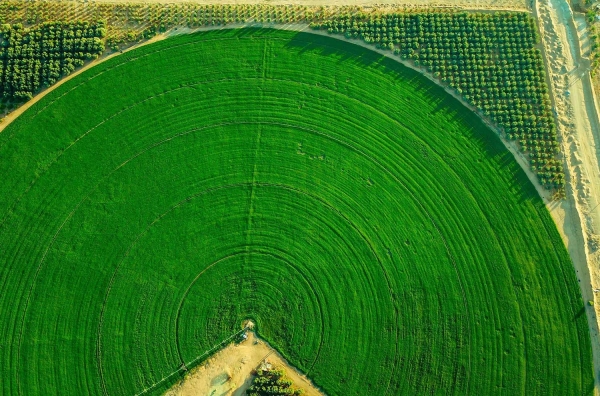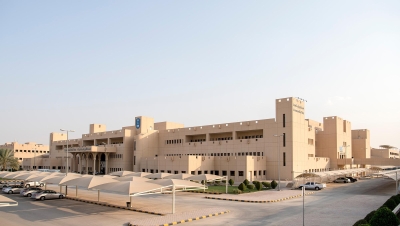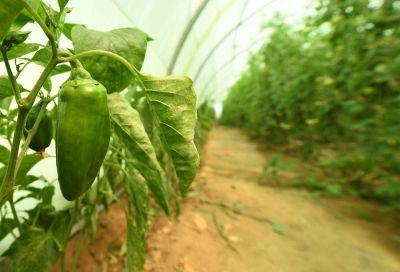

The National Agriculture Strategy is a working framework for developing agricultural activities in the Kingdom of Saudi Arabia. It serves as a reference framework for the Ministry of Environment, Water, and Agriculture, contributing to the establishment of laws, legislation, and guidelines.
The strategy represents a national plan for the Environment, Water, and Agriculture sector, approved by the Council of Ministers in 2020. It transferred seven responsibilities from the Ministry of Municipalities and Housing to the Ministry of Environment, Water, and Agriculture, aiming to achieve a sustainable agricultural sector that contributes to food and water security, as well as economic, social, and environmental development in the Kingdom.
The importance of the National Agriculture Strategy
The National Agriculture Strategy achieves several benefits for the agricultural sector in the Kingdom, as it works to improve the level of local agricultural production to become an important contributor to Saudi food security. It also stimulates agricultural marketing, contributes to protecting the rights and interests of farmers, and rationalizes the tasks of companies operating wholesale markets and intermediaries.
The objectives of the National Agriculture Strategy
The National Agriculture Strategy aims to achieve the objectives of Saudi Vision 2030 in the agricultural sector, which plays a pivotal role in realizing the Saudi Vision. It is considered a fundamental pillar for food security and the stability of food product prices in the Kingdom, as well as contributing to rural and economic development.
The agricultural sector plays an important role in providing food security and achieving substantial economic returns for farmers and investors. It is a primary source of raw materials and production inputs for around one thousand food and beverage manufacturing plants, representing more than 14 percent of factories in the Kingdom. The sector is also a significant exporter, being one of the largest exporters of dates globally and a major shrimp exporter in the region.
The strategy is based on a vision that enhances growth opportunities for agricultural investment in the Kingdom and achieves its targets. Consequently, several long-term goals have been set, including protecting and improving the use and sustainability of natural resources to contribute to water security and environmental conservation and enhancing food security in the Kingdom during both normal conditions and emergencies.
The strategy also aims to create job opportunities, contribute to sustainable rural development, and provide suitable living conditions for small farmers. It seeks to enhance productivity, competitiveness, and the investment environment for agricultural products and services, and boost their contribution to the economy. Additionally, the strategy focuses on improving plant and animal health and safety, protecting against diseases and pest infestations, and ensuring product safety.
Research areas of the National Agriculture Strategy
To achieve the objectives of the National Agriculture Strategy and keep pace with modern agricultural technologies, the strategy has identified a set of research areas of importance to the Kingdom. These include smart agriculture and the use of technology through research and development focused on innovative techniques for growing fruits and vegetables, and the application of information and communication technologies along the value chain in the planning, management, and monitoring stages.
The research areas in the strategy also include dry and saline agriculture, and enhancing scientific research aimed at developing salt-tolerant crops suitable for the Kingdom's climatic conditions. Additionally, it involves the use of smart irrigation systems through the efficient use of water and scientifically managed provision of production inputs in the irrigation process.
The strategy also includes integrated gene management systems and breed improvement in its research areas. This involves genetic enhancements to develop high-yield varieties capable of withstanding challenging conditions, especially regarding water needs, in light of climate change
The research areas also include animal breeds and nutrition, focusing on animal breeds and feed specifically designed to adapt to local environmental conditions and the scarcity of natural resources. Additionally, it covers animal health by developing vaccines and medicines tailored to local breeds, diseases, and natural conditions.
Pillars of the National Agriculture Strategy
As part of the integrated framework of the National Agriculture Strategy, seven strategic performance pillars were proposed, including enhancing the sustainability of natural resources. This pillar aims to reduce the consumption of non-renewable groundwater in the sector from nineteen billion m³ per year to between 3.8-6.2 billion m³ per year, develop the irrigation sector, improve land use, and manage agricultural waste.
The second pillar of the strategy is to contribute to food security by setting self-sufficiency targets and strategic storage for all agricultural products in line with food security requirements. It also aims to enhance agricultural investment abroad according to the strategy of responsible Saudi agricultural investment abroad.
The third pillar of the strategy focuses on developing agricultural marketing and services by improving the efficiency of agricultural services in cooperation with the private sector, developing agricultural markets and marketing, activating the role of cooperative associations, redirecting support mechanisms to enhance productivity, and promoting products with comparative advantages.
The fourth pillar is sustainable agricultural rural development. This involves enhancing the production capabilities of small farmers in rural areas by developing the cultivation, processing, and trade of some promising agricultural products to ensure economic and social sustainability in these areas.
The fifth pillar, which focuses on maintaining plant and animal health, works on developing an integrated system to enhance the safety and quality of agricultural products by strengthening quarantine measures, preventive methods, and mechanisms for investigation and control.
The sixth pillar focuses on improving agricultural productivity through the use of modern technologies, adopting excellent practices, and enhancing research and development in the plant, animal, and fishery sectors to increase production efficiency and achieve local production targets while ensuring sustainability. The seventh pillar, related to sector restructuring and capacity building, involves implementing proposed improvements to the institutional and legislative framework, developing monitoring and surveillance capabilities, enhancing education and training, and building comprehensive and up-to-date information systems and databases for the sector.
Axes of the National Agriculture Strategy
The National Agriculture Strategy was developed after comprehensive studies of the national needs for agricultural products to achieve integration between local production and external agricultural investment. Therefore, the strategy's framework objectives include several axes, such as the sustainability of natural resources. In this axis, it was found that the area of cultivated land in 2017 was about one million ha. Most agricultural activities are concentrated in the sedimentary shelf regions (Riyadh, Qassim, Hail, and al-Jawf). The reliance on non-renewable groundwater for agriculture in these areas represents a significant challenge to the sustainability of natural resources and agricultural activity in the Kingdom.
The strategy considered all the challenges related to the proposed axes and proposed possible solutions to address them. In the axis of natural resource sustainability, the National Water Strategy, which serves as a fundamental input to the National Agriculture Strategy, aims to reduce the consumption of non-renewable groundwater and develop renewable water sources, such as rainwater harvesting and the reuse of treated wastewater.
In the axis of food security, the strategy found that local agricultural production secures about 34 percent of the national caloric needs. There are several opportunities to increase this percentage by expanding the production of goods with comparative advantages, reducing losses and waste along the supply chain, enhancing productivity, and developing modern agricultural practices. Although the Kingdom has the potential to increase self-sufficiency in certain food products such as poultry, fish, dates, and milk, water resources and the biophysical nature of the Kingdom represent major challenges to achieving self-sufficiency. Therefore, the National Food Security Strategy has identified alternative solutions to enhance food security, such as responsible agricultural investment abroad.
The strategy aims to achieve the well-being of the community and farmers. In this axis, the strategy found that the agricultural sector provides an important source of income for more than one million Saudis. Small farmers constitute the majority of producers in the agricultural sector by number (about three hundred thousand small producers). Their developmental and food security largely depends on improving their income, marketing efficiency, access to consumers, and expanding the agricultural production base in rural areas through developing agricultural activities with comparative advantages and economic feasibility, as well as enhancing the role of green agricultural villages.
Regarding the economic contribution axis, the strategy supports efforts to grow the gross domestic product (GDP). In this context, the agricultural sector recorded approximately SAR65.29 billion in 2017, about SAR65.49 billion in 2018, SAR66.20 billion in 2019, and around SAR67.05 billion in 2020. In 2021, the sector saw an increase, reaching a value of SAR72.25 billion.
In addition to contributing effectively to diversifying the Kingdom's revenues, agriculture is a means to reduce the non-oil trade balance deficit. The number of exports of agricultural products reached 739,000 t, including dairy products, dates, and fish meat.
To ensure safety in agricultural production processes, the strategy considers the prevention axis. The palm weevil (Rhynchophorus ferrugineus), animal diseases, and fish diseases pose threats to the sustainability and productivity of Saudi agricultural production. Activating preventive measures, raising awareness, and developing an integrated system to enhance the safety and quality of agricultural products through strengthened quarantine procedures, investigation mechanisms, and control measures are the key methods that the Kingdom can implement to ensure product safety and consumer health.
Related quizzes

